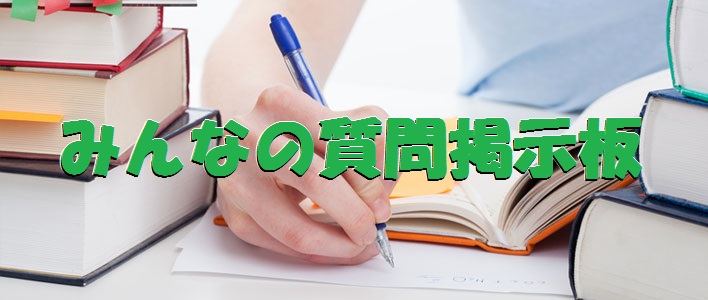Eco-tour on Yakushima
(Part 1)
Good morning, everyone. Welcome to Yakushima! Thank you very much for
joining our eco-tour. My name is Suzuki Kenta, and I’m your guide for the tour.
First, I am going to give you a short orientation. After that, we will start the
tour. We’ll return to this office tomorrow evening.
By the way, do you know what an “eco-tour” is? It is a trip in which people are
asked to be more responsible for the environment. In other words, we need to be
more careful not to damage the environment while we’re on the tour.
Yakushima was registered as Japan’s first Natural World Heritage Site in 1993.
Since then, the number of tourists to this island has greatly increased. Of course,
we’re very happy to have so many tourists, but this has caused some problems.
For example, plants along some mountain paths have been stepped on and
damaged by the tourists. So, before starting the tour, I want all of you to
understand the meaning of eco-tours.
(Part 2)
Now we’re going to take a look at the land features of Yakushima. This is a
picture of the island. Yakushima is a round island which is covered with green
forest. It’s about 500 km2 (square kilometers). If you compare Yakushima with
Tokyo or Osaka, you can understand its size. On the island, there’re over 40
mountains which are more than 1,000 m (meters) high. So, Yakushima is called
“the Alps of the Sea.”
The climate of Yakushima is usually warm and humid throughout the year.
The average annual temperature is 20℃ in the areas along the coast and 15℃ in
the central area. It is surprising that the temperature can fall below zero in the
mountain top area in winter. During this time, it is covered with snow.
Yakushima has a lot of rain and it is said that “it rains 35 days a month!” The
humidity is high, about 73–75% on average. The annual rainfall is about 4,000
mm (millimeters) in the low-lying areas. In the mountain areas, it’s about
8,000–10,000 mm. This climate, along with its land features, has created a
unique ecosystem on Yakushima.
(Part 3)
Next, I’ll show you the three sites where we are going. Look at this picture.
You’ll find something mysterious in it. It’s a dense forest with a thick carpet of
moss in Shiratani Unsuikyo. Have you seen the animated movie, Princess
Mononoke? When he was making this movie, Miyazaki Hayao, the director, was
strongly inspired by this mysterious forest. We’re going to go there this
afternoon.
The next picture is Wilson’s Stump, a great tree stump with a diameter of 4.39
m. The inside of the stump is empty, and we can go into it. Surprisingly, we
can see some water flowing out of the ground there. You’ll also find a small
shrine. It is said that this tree was cut down in 1586 by the order of Toyotomi
Hideyoshi to build Hokoji-temple. By the way, do you know the reason why it is
called Wilson’s Stump? It was named after Dr. Wilson, a famous botanist. He
was the first person to introduce this stump to the world in 1914. I think you
will enjoy this site, too.
(Part 4)
The last picture is, as you all know, Jomon Cedar. It’s one of the oldest and
largest cedars on Yakushima. It was discovered in 1966. Can you imagine how
old and how large it is? It is considered to be 2,000–4,000 years old. Some
people say it is 7,200 years old! It is 25.4 m in height and it is 5.2 m in diameter.
Tomorrow we will look for this tree on the tour.
In the Edo period, people on Yakushima began to cut down cedars. They had
a poor rice crop because there was little land for growing rice there. As a result,
they had to offer boards of cedars as nengu (land tax). Fortunately, some cedars
over 1,000 years old were left uncut then because they were not suitable for
making boards. That’s why we can still see them as well as Jomon Cedar!
I’m very sorry to say that we can’t touch or get close to Jomon Cedar. We can
only look at it from a distance. That’s because many tourists stepped on the
roots and damaged the tree. This fact makes us think about the meaning of
eco-tours.
That’s all for the orientation. Do you have any questions?
Lesson 7 Lesson 7 屋久島エコツアー
(Part 1)
みなさま,おはようございます。屋久島へようこそ!私どものエコツアーにご参加
いただき誠にありがとうございます。私の名前は鈴木ケンタで,みなさまのツアーガ
イドを務めます。最初に,短時間のオリエンテーションを行います。そのあと,ツア
ーを始めます。明日の夕方,この事務所へ戻ってまいります。
ところで,「エコツアー」とは何かご存じでしょうか。それは人々が自然環境にも
っと多くの責任を負うことが求められる旅行のことです。言い換えますと,ツアー中,
私たちは自然環境を傷つけないよう,もっと気をつける必要があるということです。
屋久島は 1993 年に日本初の世界自然遺産に登録されました。そのとき以来,この島
への観光客数は非常に増加しています。もちろん,これほど多くの観光客をお迎えし
てとてもうれしいのですが,このことでいくつかの問題が起こっています。たとえば,
いくつかの山道沿いの植物が観光客に踏まれ,傷つけられてしまいました。ですから,
ツアーを始める前に,みなさまにエコツアーの意義をご理解いただきたいのです。
(Part 2)
それでは屋久島の地形を見てみることにしましょう。これが島の写真です。屋久島
は緑の森に覆われた円形の島です。島の面積は約 500 平方キロあります。屋久島を東
京や大阪と比較すると,その大きさがおわかりいただけます。島には,1,000 メート
ルを超える高さの山が 40 以上あります。そのため,屋久島は「海のアルプス」と呼
ばれているのです。
屋久島の気候は通常 1 年を通して温暖多湿です。年平均気温は沿岸部で 20 度,中
央部で 15 度です。驚いたことに,冬には山頂部で気温が氷点下に下がることがあり
ます。この期間,山頂部は雪に覆われます。屋久島は雨が多く,「1か月に 35 日雨
が降る」と言われています。湿度は高く,平均約 73 から 75 パーセントです。年降
水量は低地部で約 4,000 ミリです。山間部では,約 8,000 から 10,000 ミリです。こ
うした気候が,その地形とともに,屋久島に独自の生態系を作り出したのです。
(Part 3)
次に,私たちがこれから向かう 3 つの場所をお見せしましょう。この写真をご覧く
ださい。写真には何か神秘的なものが見えるでしょう。これは白谷雲水峡にある厚い
コケのじゅうたんが敷かれた深い森です。「もののけ姫」というアニメ映画をご覧に
なったことがありますか。この映画を作っていたとき,監督の宮崎駿はこの神秘的な
森に強くインスピレーションを受けました。今日の午後そこに行く予定です。
次の写真はウィルソン株で,直径 4.39 メートルの大きな切り株です。切り株の内
部は空っぽで,中に入ることができます。驚いたことに,そこでは地面から少量の水
が湧き出ているのを見ることができます。また,小さな祠(ほこら)も見つかるでしょ
う。この木は 1586 年,方広寺の建立のために豊臣秀吉の命令で切り倒されたと言わ
れています。ところで,その切り株がウィルソン株と呼ばれている理由をご存じです
か。有名な植物学者のウィルソン博士の名をとって名づけられました。彼は 1914 年
にこの切り株を世界に紹介した最初の人物でした。この場所もお楽しみいただけると
思います。
(Part 4)
最後の写真は,みなさまもご存じのとおり,縄文杉です。屋久島で最も古くて大き
な杉の木の 1 つです。1966 年に発見されました。それがどれくらい古くて大きいか
想像できますか。それは樹齢 2,000 年から 4,000 年と考えられています。中には樹齢
7,200 年と言う人もいます!高さは 25.4 メートル,直径は 5.2 メートルあります。明
日,ツアーでこの木を探します。
江戸時代,屋久島の人々は杉の木を切り倒し始めました。屋久島には米栽培に向く
土地がほとんどなかったので,米の収穫高が低かったのです。そのため,年貢(土地
税)として杉の板を差し出さなければなりませんでした。幸運にも,樹齢 1,000 年を
超える杉の中には,板作りに適さなかったために,当時切られずに残されたものもあ
りました。そういうわけで,縄文杉だけでなく,そういった木も今なお見ることがで
きるのです!
非常に残念ですが,縄文杉に触れたり近づいたりすることはできません。遠くから
見ていただくことしかできません。それはなぜかと言いますと,多くの観光客が根を
踏んで,木を傷つけたからです。こうした事実は,私たちにエコツアーの意義を考え
させてくれます。
これでオリエンテーションは終わりです。何か質問はございますか。




コメント